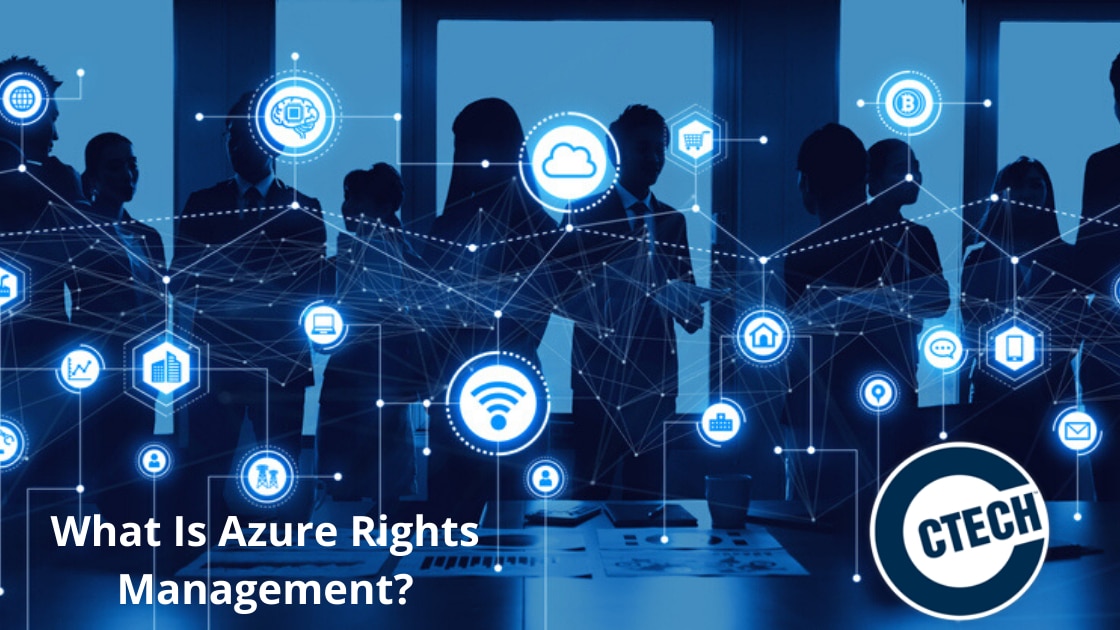Secure Company Assets with Proactive Azure Rights Management
Microsoft Azure is a set of cloud services used by 85% of Fortune 500 companies and secures company assets with proactive Azure Rights Management. Azure Rights Management (often abbreviated to Azure RMS) is the protection technology used by Azure Information Protection and forms part of the Microsoft suite of software products. This cloud-based protection service uses encryption, identity, and authorization policies to help secure your files and email.

What is Azure Information Protection
Azure Information Protection (sometimes referred to as AIP) is a cloud-based solution that helps your organization classify and optionally, protect your documents and emails by applying labels. Labels can be applied automatically by administrators who define the rules and conditions. The flexibility of the software means once Azure Information Protection labels have been defined, a user will see a custom tooltip that recommends they use the label the administrator configured. This label then classifies the document and protects it. With AIP, you can analyze data flows to gain insight into your business, detect risky behaviors, and take corrective measures. The software allows you to track access to documents and prevent data leakage or misuse.
How Azure Labels Work
Azure Information Protection labels are used to apply classification to documents and emails. The classification then becomes identifiable regardless of where the data is stored or with whom it’s shared. The labels can include visual markings such as a header, footer, or watermark. Metadata is added to files and email headers in clear text. The clear text ensures that other services, such as data loss prevention solutions, can identify the classification and take appropriate action.
If an email message has been classified as general, the label will automatically add a footer of “Sensitivity: General” to the email message. This footer is a visual indicator for all recipients that it’s intended for general business data only and it should not be sent outside the organization. The label is embedded in the email headers so that email services can inspect this value and create an audit entry or prevent it from being sent outside the organization.
If an administrator configured a label with rules to detect sensitive data such as credit card information, the data can be protected within a document allowing it to be tracked and controlled on how it is used. When employees email a document to a partner company, or save a document to their cloud drive, the persistent protection that Azure RMS provides not only helps to secure your company data, it might also be legally mandated for compliance, legal discovery requirements, or simply for good information management practices.
Azure Provides Consistent Protection
Azure works across multiple devices such as smartphones, tablets, and PCs. Information can be protected both within your organization and outside your organization because that protection remains with the data, even if it leaves your organization’s boundaries. More importantly, authorized people and services (such as search and indexing) can continue to read and inspect the protected data from anywhere. This capability is referred to as “reasoning over data” and is a crucial element in maintaining control of your organization’s data. This capability is not easily accomplished with other information protection solutions that use peer-to-peer encryption.
When you use Azure Information Protection with Exchange Online, you get an additional benefit: The ability to send protected emails to any user, with the assurance that they can read it on any device. If users need to send sensitive information to personal email addresses that use a Gmail, Hotmail, or a Microsoft account or to users who don’t have an account in Microsoft 365 or Azure AD, those emails should be encrypted at rest and in transit, and be read-only by the original recipients.
How Data is Protected with Azure Rights Management
The protection technology uses Azure Rights Management technology which is integrated with other Microsoft cloud services and applications, such as Microsoft 365 and Azure Active Directory. It can also be used with your own line-of-business applications and information protection solutions from software vendors, whether these applications and solutions are on-premises, or in the cloud. As soon as the Azure Rights Management service is activated, two default templates are available for you that restrict data access to users within your organization. You can use these templates to immediately prevent sensitive data leaking from your organization. You can also supplement these default templates by configuring your own protection settings that apply more restrictive controls.
To learn more about securing your company assets with Azure Rights Management, contact the experts at CTECH. Call us on 403-457-1478 or email info@ctechgroup.net and find out more about how CTECH is recognized by Microsoft, Ingram Micro, IT World Canada, and other top Canadian technology communities for the high-quality work and many satisfied Calgary-area businesses we serve. CTECH Consulting Group was recently named one of Canada’s Top 50 Managed IT companies — proof that our commitment to high-quality service makes us a leader in the national MSP community.

My passion is to make my mark on the world in a positive and lasting way. I want to set an example for my son that his father can compete with integrity in today’s world, be very successful, and leave the world a better place for him.
Combining my technical/business-based education with a long career steadily progressing up the corporate ladder, I decided to build a company that held true to my values. So, I founded and designed the next generation of IT support firm: CTECH Consulting Group Inc. We are a completely automated, cloud-based IT company designed to compete against any other IT firm without the overhead. We promote a lifestyle to all our staff where they can work anywhere, at any time, access any information on any device that is relevant to their job, and collaborate with anyone they want to.

